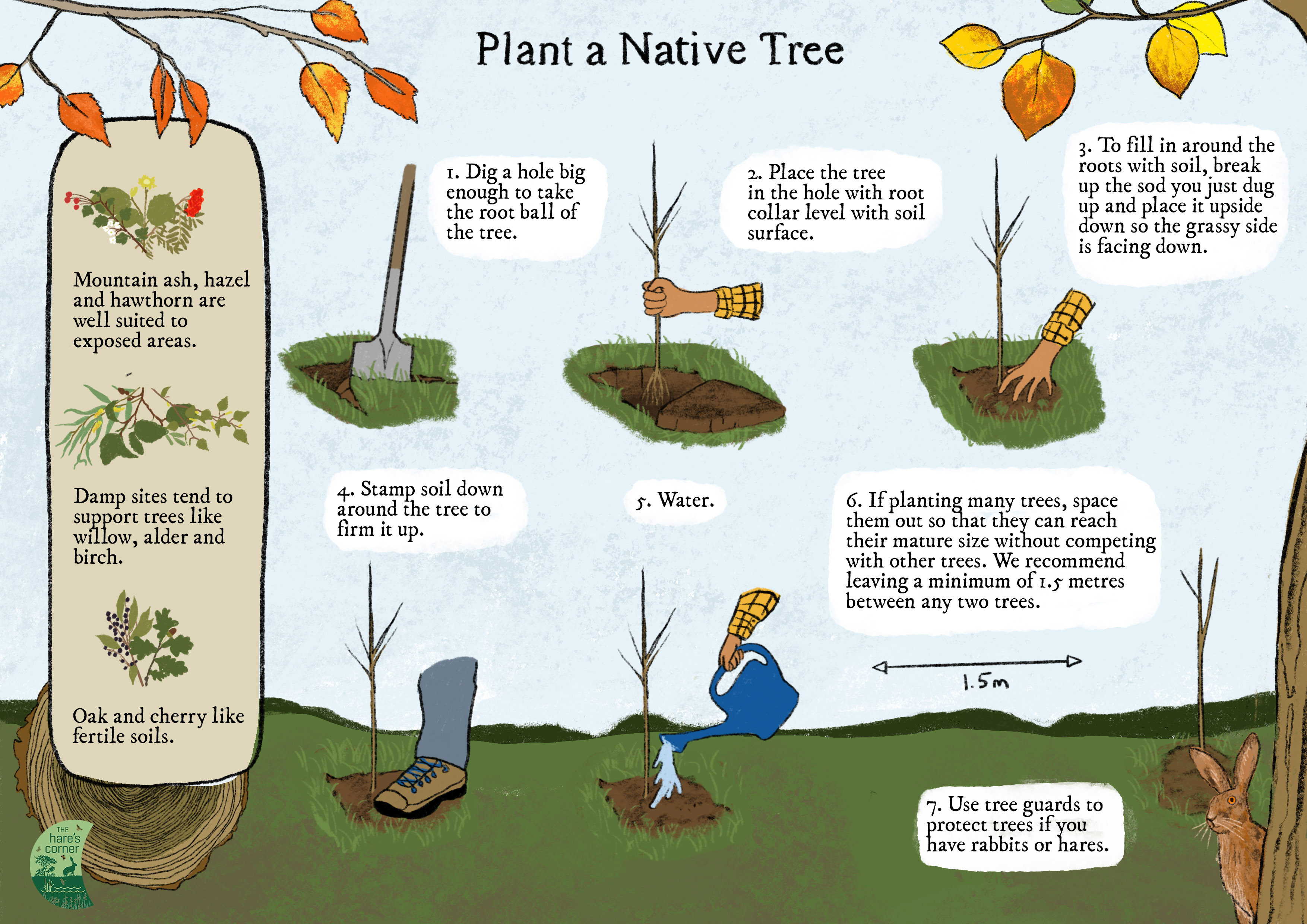
Plant a Native Tree
Where: Anywhere except
- In an area already rich in biodiversity e.g. species-rich wildflower meadow, mature woodland, marshy wetland or active peatland. Typically, arable or grassland areas with few existing wildflowers, or fungi will make good planting locations.
- Under overhead cables (telephone or electricity).
- Above underground conduits (domestic waste pipes, water, gas or electricity lines).
- Too close to any building (a good estimate is to plant your tree at least its mature height away from the nearest building.)
- In waterlogged soil (unless the chosen tree can cope with these conditions).
Which: Native provenance
- Choose a native tree grown from native stock – it is best adapted to local climate and will provide better habitat for wildlife. (list of native trees )
- Check what is already growing well in your area. (e.g. quite often damp sites tend to support trees like willow, alder and birch. Mountain ash, hazel and hawthorn are well suited to exposed areas, while oak and cherry like fertile soils.)
When: Winter
- The best time of year to plant a tree is when the roots are dormant as they are less easily disturbed by the moving process: typically, from mid-November to late March.
How:
- Get ready. You will need your bare-root tree (soaked for an hour or so before planting) and a spade.
- Dig a hole big enough to take the root ball of the tree.
- Place the tree in the hole – the root collar (thicker section where stem joins roots) should be level with the soil surface.
- To fill in around the roots with soil, break up the sod you just dug up and place it upside down so the grassy side is facing down.
- Stamp soil down around the tree to firm it up. Water.
- If planting many trees, space them out so that they can reach their mature size without competing with other trees. We recommend leaving a minimum of 1.5 metres between any two trees.
Care for your tree: For the first few years of its life or until the tree is established, keep grass or competing vegetation around the tree down by regularly trampling (cut grass tends to grow faster than trampled). Protect it from any grazers by fencing if needed. If there are Hares or Rabbits in the area, you may need to fit tree guards to protect the young trees. If there are extended periods of drought, you may need to water your trees in their first year.
Benefits: Native trees and shrubs benefit wildlife greatly by providing food sources, shelter and the individual trees are mini habitats in their own right.
Useful Links:
- Native trees list. (Right Tree Right Place | Tree Council)
- Planting trees on a farm: https://www.teagasc.ie/media/website/publications/2020/Botanic-Gardens—Planting-native-trees.pdf
- Woodland planting information session with Bernard Carey: https://www.youtube.com/watch?v=337Sn8WzWVY
- Tree growing – https://treegrowing.tcv.org.uk/grow , https://treecouncil.org.uk/seasonal-campaigns/seed-gathering-season/
- How to plant a tree | The Wildlife Trusts